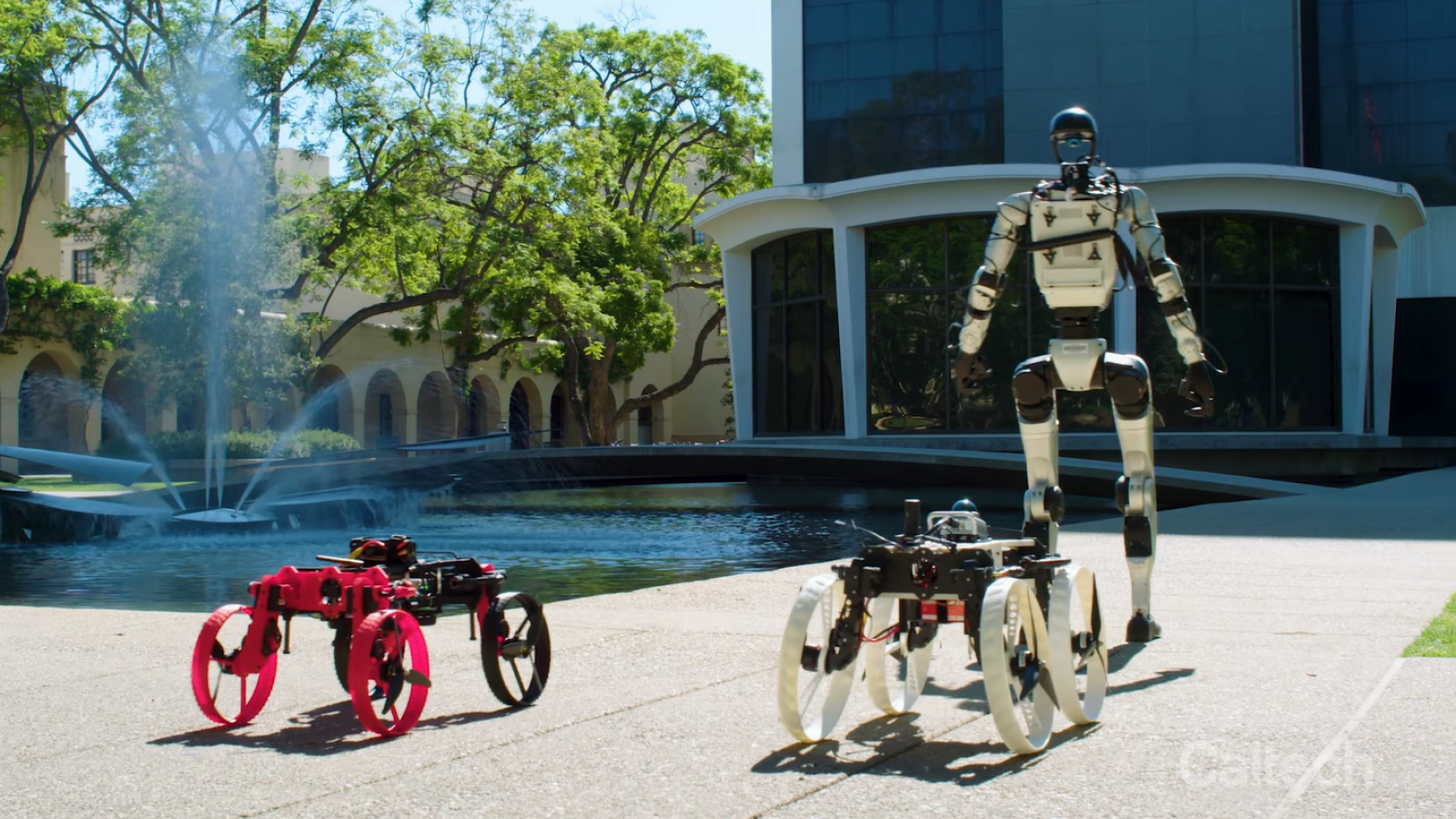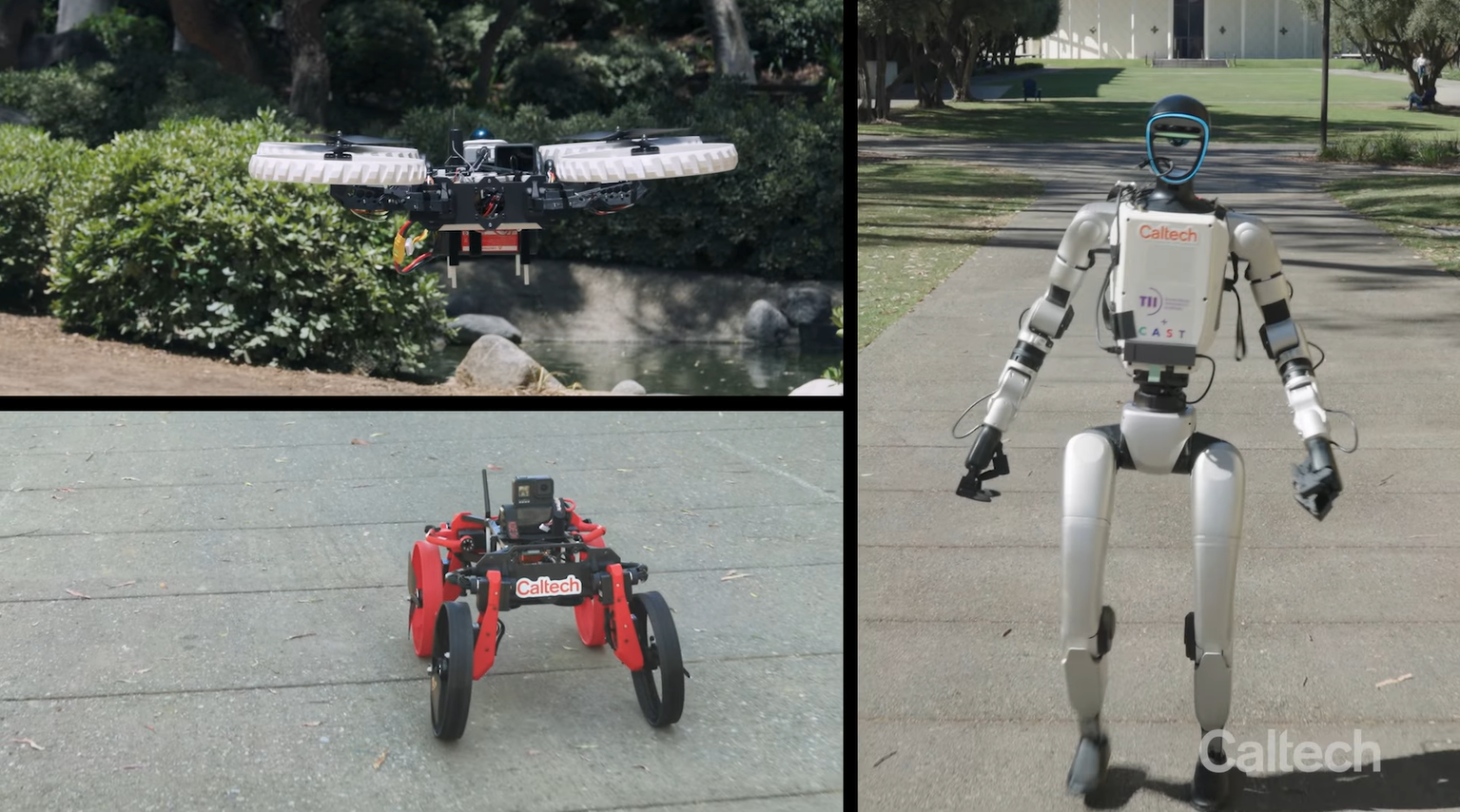New 'Transformer' humanoid robot can launch a shapeshifting drone off its back — watch it in action
Developed at Caltech, a new robot is a humanoid that can launch an M4 drone, switching between different modes of motion, with wheels that can become rotors.
Caltech engineers have developed a multimodal robot system — a humanoid robot with a transforming drone that launches off its back.
Sitting on the back of the humanoid robot, a Unitree G1 machine, the drone, called M4, can transform — switching between driving and flight modes. We’re not talking Optimus Prime or Megatron here; instead, the drone-expelling bot is more like Soundwave, a Decepticon that housed different, mini transformers, like drones, in its chest.
The system is the culmination of a three-year collaboration between Caltech's Center for Autonomous Systems and Technologies (CAST) and the Technology Innovation Institute (TII) in Abu Dhabi, United Arab Emirates.

The humanoid can walk (although we have seen smoother movers) and it can tackle stairs and navigate its way to wherever it has sent the drone, though at a much slower pace.
"Right now, robots can fly, robots can drive, and robots can walk. Those are all great in certain scenarios," Aaron Ames, director of CAST and a professor of aerospace and engineering at Caltech, said in a statement. "But how do we take those different locomotion modalities and put them together into a single package, so we can excel from the benefits of all these while mitigating the downfalls that each of them have?"
The challenge here lay in how the team brought different robots together so that they could become one system but still offer different functionalities. The drone was built by a CAST team led by Mory Gharib, while Ames and his lab configured the humanoid robot.

M4 is capable of reconfiguring its body (transforming) into several different types of motion — it can assess the environment it needs to enter and automatically select the most effective combinations of motion to maneuver. M4 can roll on four wheels, turn its wheels into rotors and fly, stand meerkat-style on two wheels, "walk" by using its wheels like feet, use two rotors to help it roll up steep slopes on two wheels, and also simply tumble towards its destination.
Get the world’s most fascinating discoveries delivered straight to your inbox.
M4’s ability to repurpose its appendages as wheels, legs, or thrusters is a key feature. When M4 needs to fly, all four wheels fold up, and the propellers lift the robot off the ground — or off the back of the humanoid robot, which bends forward when deploying M4.
The overarching goal of the collaboration is to make such autonomous systems safer and more reliable. If we are going to have robots all around us, Ames suggested, more work needs to be focused on making them reliable.
"We're thinking about safety-critical control, making sure we can trust our systems, making sure they're secure," Ames said in the statement. "We have multiple projects that extend beyond this one that study all these different facets of autonomy, and these problems are really big. By having these different projects and facets of our collaboration, we are able to take on these much bigger problems and really move autonomy forward in a substantial and concerted way."
You must confirm your public display name before commenting
Please logout and then login again, you will then be prompted to enter your display name.

